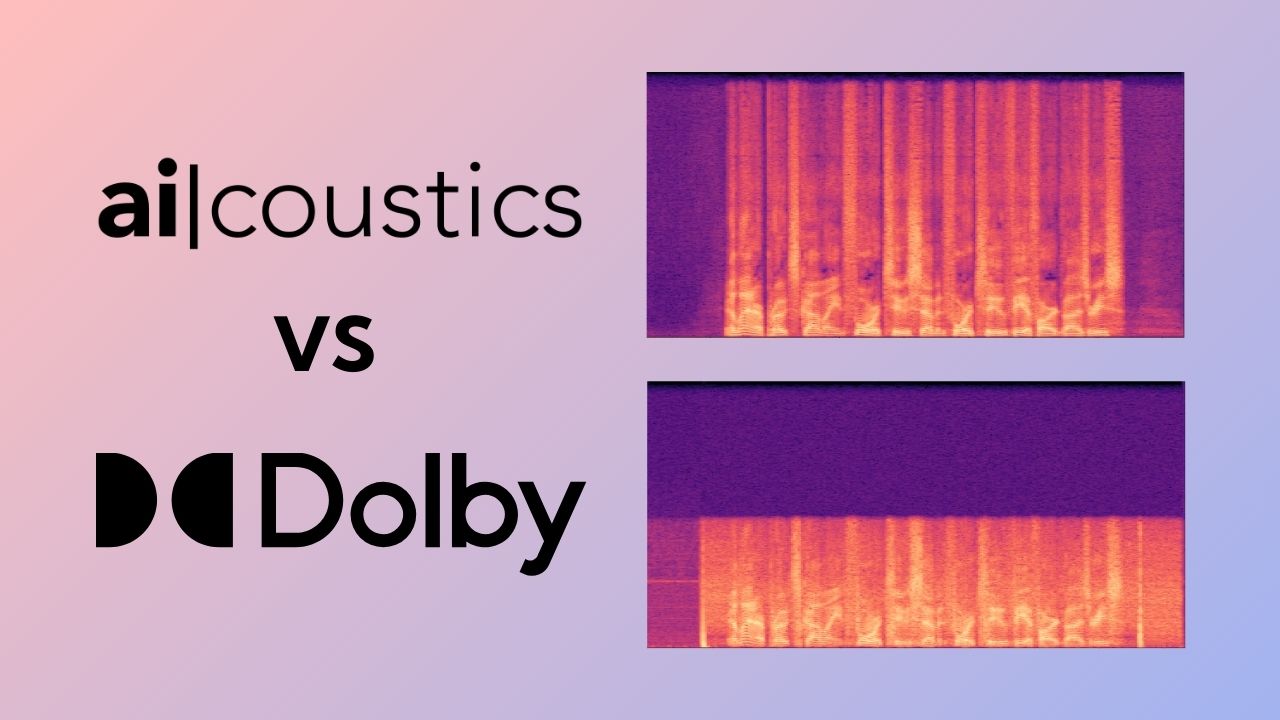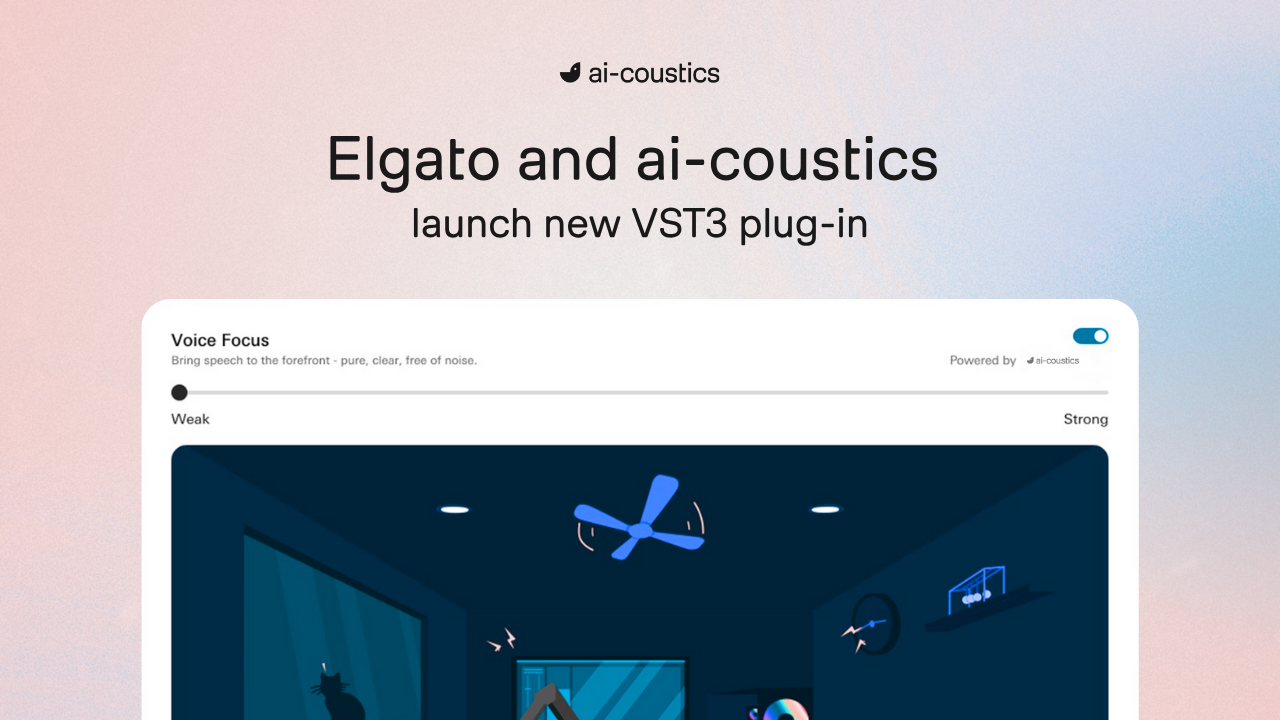Key Takeaways
- ai-coustics and Dolby approach audio enhancement differently: ai-coustics uses AI-native, reconstructive techniques focused on real-time voice improvement, while Dolby combines traditional signal processing with AI for a broad range of audio solutions.
- Dolby offers a wide suite of tools across entertainment and communication, making it a strong choice for enterprises seeking integrated, out-of-the-box solutions—particularly in media and hardware-driven environments.
- ai-coustics focuses specifically on flexible, developer-friendly voice enhancement, making it well-suited to teams that need customizable, scalable solutions for apps, call centers, or digital content creation.
- Dolby requires complex integration processes, while ai-coustics offers developer-centric models easy to adapt for your existing workflows.
Dolby is a famous player in the audio space, with a history that stretches back to the 1960s and a name for high quality audio. But as the possibilities of AI-powered audio enhancement expand, are they still the best in the game?
At ai-coustics, we’re specialists in the voice AI vertical. In this new series, we’ll compare a range of popular voice AI products against ours, offering insights into what will work best for you. Today we’ll get started with Dolby, comparing their product offering, tech, pricing, API and the most important metric of all – how their audio sounds.
Let’s get started!
Dolby vs. ai-coustics: Which audio tech suits your needs?
ai-coustics is all-in-one AI-native audio enhancement. Its mission is to deliver real-time, high-fidelity audio enhancement that is scalable, embeddable, and transparent. Think: SDKs, APIs, and real-world deployment across platforms like broadcasting, podcasting, call centers, apps, and conferencing tools.
Dolby, on the other hand, is a legacy powerhouse in audio innovation. Their enhancement offerings (like Dolby Voice or Dolby.io APIs) are built on decades of signal processing expertise—sometimes paired with AI, but often with a heavier hardware/software stack and a strong brand focus on cinematic sound.
How is ai-coustics different from Dolby?
1. We’re built for everyone – expert or not
ai-coustics is simple and accessible: You don’t have to be an audio engineer to make it work. While Dolby is great for highly trained specialists, ai-coustics is designed to be just as effective for beginners as it is for professionals. Our mission is to democratize studio-quality audio access, which means that regardless of your in-house equipment or technical knowledge, we can help.
2. We’re focused on audio enhancement
As you’d expect from a legacy company with a broad suite of products, Dolby offer a lot of different solutions across a range of business contexts. If you’re looking for a product that works as well in larger cinematic enterprises as it does in smaller studios, Dolby’s has a larger spread of products, whereas we’re focused on delivering one product that works brilliantly across as a range of industries: AI-powered audio enhancement.
3. We’re suitable for a range of company sizes
Due to their size and status, Dolby tend to focus on enterprise companies with large budgets. At ai-coustics, we work with a range of companies big and small, from solo business owners producing their first podcast to large broadcasters like Deutsche Welle or Radio France. Dolby focuses primarily on enterprise clients. At ai-coustics, we built a product that scales with your organization. We emphasize fast deployment and minimal resource usage – from solo business owners producing their first podcast to large broadcasters like Deutsche Welle or Radio France.
How does ai-coustics and Dolby’s audio enhancement compare?
In the end, it all comes down to one important aspect: how well the product can create studio-quality audio. Let’s take a look at some poor quality sound situations and see how both ai-coustics’ and Dolby’s technology deal with it.
For these comparisons, we used our Lark model, which is built with reconstructive AI and is available in our API and SDK.
Distortion and clipping
Dolby uses a subtractive AI method while at ai-coustics we use reconstructive AI technology. You can hear the difference in these simples: while Dolby removes the distortive background sound, ai-coustics removes the background sound and improves the quality of the speakers’ voices.
Original:
Subtractive (Dolby.io):
Generative (ai-coustics):
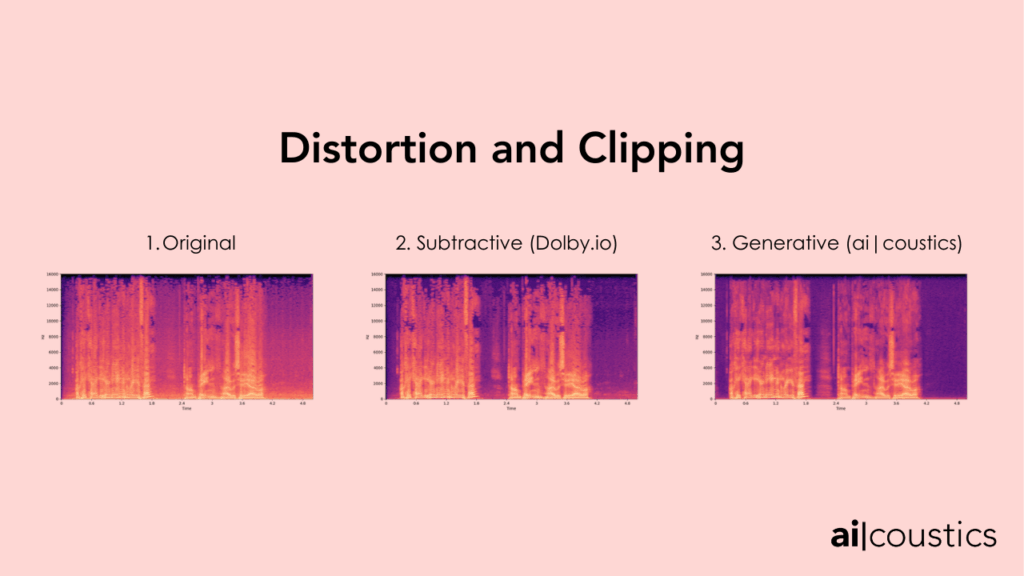
Reverb and room
In this example, you can hear the difference between subtractive and reconstructive AI once again. While Dolby’s version removes the reverb signal between the speaker’s words, it still feels present within the actual speech; in the ai-coustics version, it sounds as though the speaker has moved closer to a high quality microphone.
Original:
Subtractive (Dolby.io):
Generative (ai-coustics):
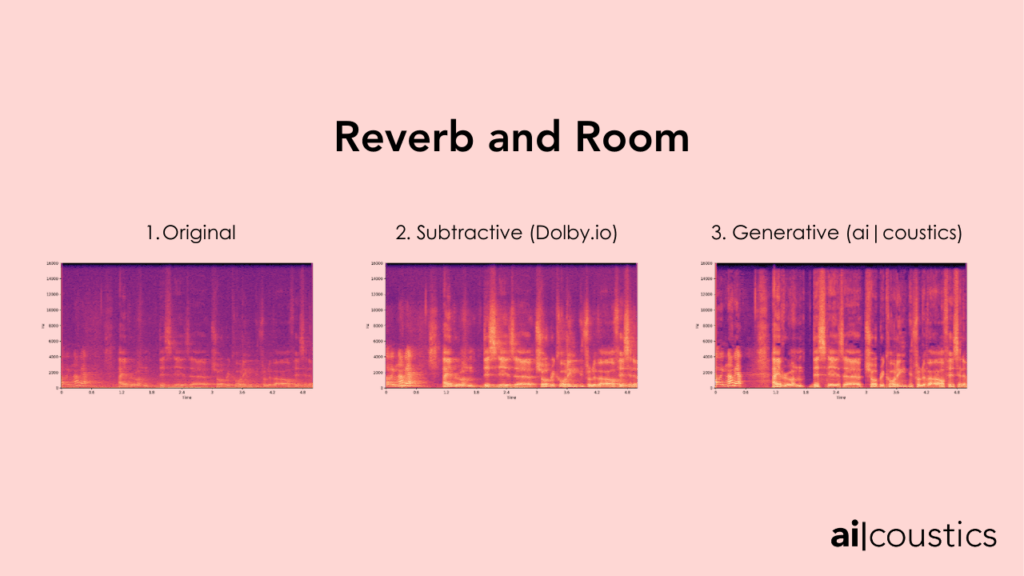
Strong bandlimited signal
The spectrogram here is useful in visualizing the difference in sound. Dolby removes the incorrect or unnecessary frequencies, resulting in a cleaner albeit still compressed sound. On the other hand, ai-coustics removes the incorrect frequencies as well as repairing the speaker frequencies, resulting in a full bandwidth and more natural sound.
Original:
Subtractive (Dolby.io):
Generative (ai-coustics):
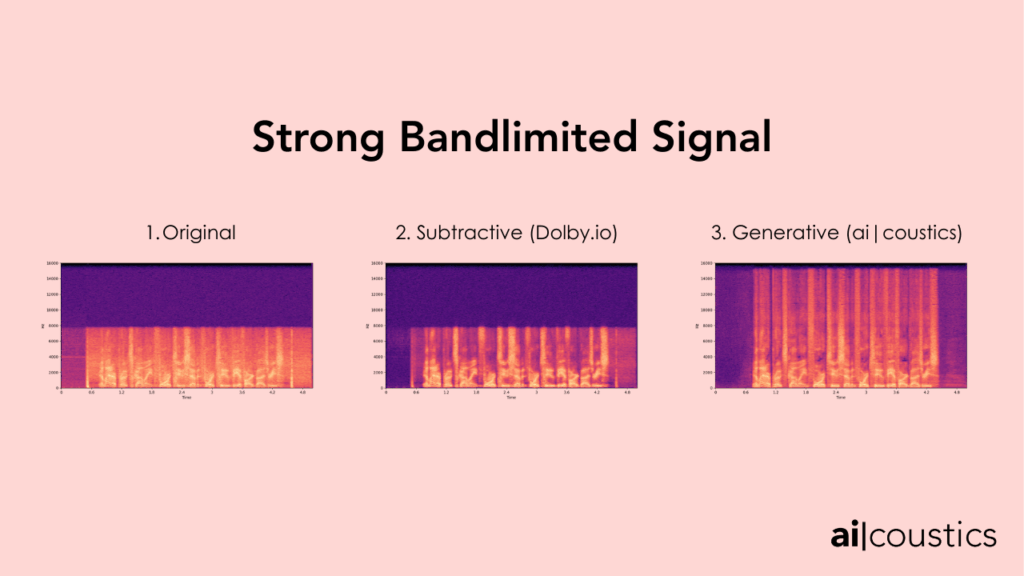
Extreme bandlimited signal
In an extreme bandlimited signal, the difference is even more pronounced and the spectrogram once again illustrates the difference between a subtractive and reconstructive approach. Dolby makes the audio clearer, but ai-coustics makes the audio seem as though it is coming from a high quality microphone, giving the speaker more resonance and returning the natural timbre to their voice.
Original:
Subtractive (Dolby.io):
Generative (ai-coustics):
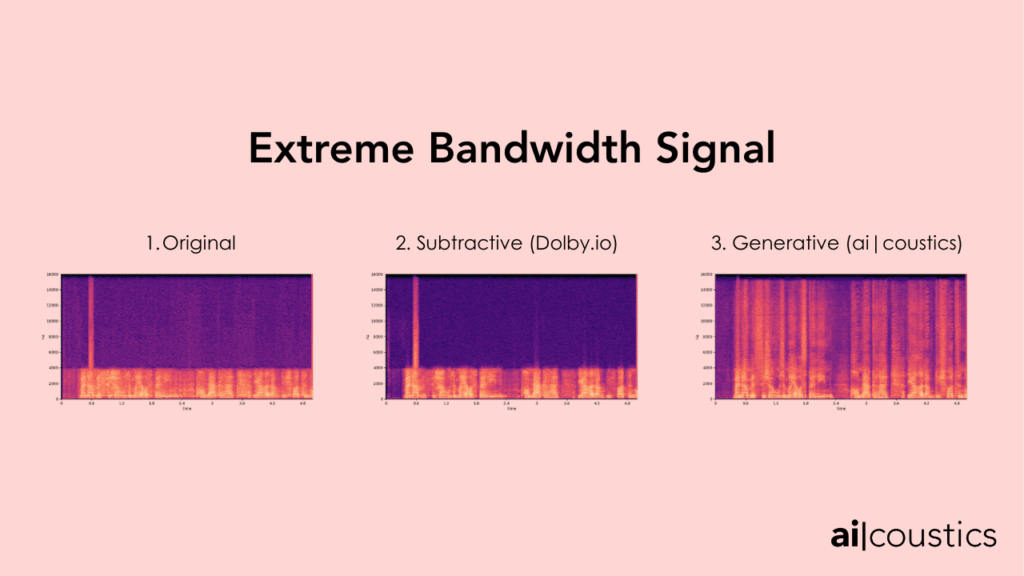
Audio comparison conclusions
The difference in these audio samples between Dolby and ai-coustics highlights the difference in our technology: reconstructive, where missing frequencies are repaired using generative AI, and subtractive, where the incorrect or ‘wrong’ frequencies are simply removed. In situations like audio enhancement, this makes ai-coustics a stronger and more versatile tool, while for more legacy industries like cinema and specific types of hardware, Dolby might be a better choice.
So... is Dolby or ai-coustics right for me?
Ultimately, it depends what you’re looking for.
Choose ai-coustics if you want: full-stack AI audio enhancement, accessibility and affordability, transparent performance, a developer-friendly build, seamless integration, flexibility across deployment types, and optimization for real-time audio enhancement across a wide range of hardware and software.
Choose Dolby if you want: a trusted brand with pre-tuned, out-of-the-box enhancement, especially if you’re already using Dolby media tools or infrastructure.
Want to talk more about how we can help your brand achieve studio-quality sound? Get in touch.
